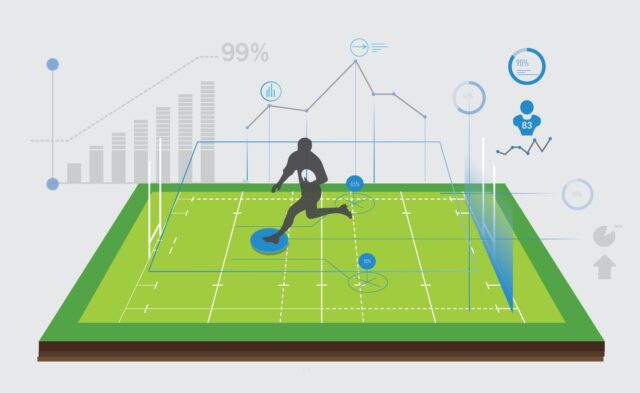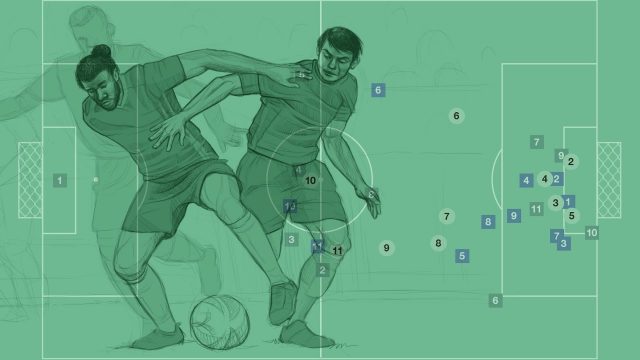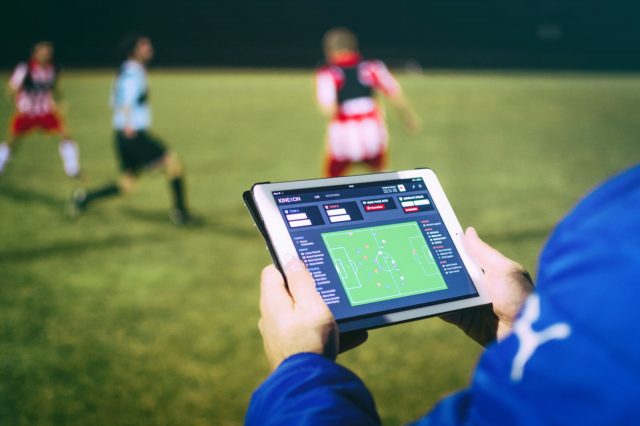
Sports encompass so many different things that it’s nearly impossible to even think about this concept without going into a philosophical frenzy. Regardless, statistics play a huge role in everything sports-related, as we use them to measure all sorts of characteristics, events, and so forth.
Quite frankly, sports wouldn’t exist on the level that they exist today had it not been for the science of statistics. It’s already old news that we’ve been generating data these past few years like nothing before. But how much of it targets sports specifically? While we don’t know this for sure, we can tell you about all of the factors that contribute to sports’ importance in this domain.
What Is Machine Learning?

Unlike artificial intelligence, machine learning algorithms are much more widespread than AI. Because, realistically speaking, machine learning practically allows computers to understand how to interpret and use certain data. When it comes to sports, relying on football game analysis software is how you can apply such a concept directly to the field.
By using this type of AI and advanced tracking cameras, you’ll be able to process data related to every player’s performance and other vital aspects in such a way that you can then sell it. It’s basically how many gambling websites operate – by processing that data, showing users the odds, and thus encouraging them to place bets on their favorite teams, events, and so forth.
Data Analysis and Machine Learning in Sports

Understanding every aspect of the game is critical towards understanding how to collect and analyze the necessary data. Afterward, you need to interpret the data in a readable format so that users can comprehend what’s actually happening.
We need to take into account every possible statistic that might be related to the game. Even minor things such as past injuries, number of passes, ball possession percentage, and so forth, play a vital role in determining the odds of a match.
Plus that they allow managers to make better trades and decisions when it comes to their team’s player base. However, the ultimate goal of machine learning in sports is to interpret the data in such a way that it can predict wins and losses as accurately as possible. People often make mistakes, but machines can help us correct them.
Once players see all the data gathered by such an AI, they’ll be able to come up with a better strategy so that they’ll make fewer mistakes in the future.
How a Computer Sees a Match

You can think of computer vision as it is portrayed in this instance. The world of sports events organizers and equipment manufacturers has been bombarded with smart sensors, smart devices, and smart cameras nearly everywhere. Having a combination of all these items allows people to create truly fascinating charts that change how we view sports forever.
Computers are smart enough nowadays to be able to distinguish between shapes, actions, colors, and so much more. Machines are the only ones that can truly determine how fast a player runs, which marathon participant finished first (in cases with a nearly tied finish), or who has the most potential out of the entire playing field.
Analytics Can Improve the Game

Let’s take a look at the NBA a little. There’s almost no doubt that you have heard about it if you’re reading this article. Well, you might be surprised to find out that it wasn’t just human trainers who have turned almost unknown players into household names.
People are very limited in what they can achieve despite their best knowledge, skill, and so forth. A lot of the things that have to do with modern-day basketball come from statistics and especially computer algorithms that can simulate and calculate tons and tons of stuff we humans couldn’t even comprehend.
It was a computer algorithm that finally put an end to the debate regarding the 2-point mid-range jumper. You’re better off shooting threes or taking it to the rack and getting an easy layup or a foul. So, if you compare stats from 2002 to stats from 2024, you’ll see that significantly fewer players rely on this move nowadays.
What Other Improvements Could Come Down the Line?

Some might be pretty happy with how things are right now. Others, on the other hand, want to see even more improvements down the line. For instance, while movement-tracking cameras exist, they aren’t as advanced as we might want them to be. Maybe in the future, these cameras could track all the minute movements of a player’s body. For instance, if a player keeps twisting their arm or leg slightly, the camera can notify the coach about this so that they can guide them on how to keep it steadier and thus avoid possible injuries.
Another aspect that can be further improved is the crunching of historical data. The problem with it is that some historical data might be a little off because we didn’t have such advanced technology back then. However, with further improvements, we might be able to correct that data and make it as accurate as possible. Or, if not, we could still gather more data from here on out and be able to make much better predictions in the future.
Final Thoughts
Do you think that there’s more to be improved when it comes to machine learning in the field of sports statistics? Well, there certainly is room for improvement any day. But what exactly would you like to see improved? Is it any of the things that we have previously mentioned in the article, or is it something that we haven’t even thought about? Let us know in the comments below and feel free to share some other thoughts regarding this subject matter as well. We’re always glad to see our readers come up with suggestions for future article updates or even for new articles as well. It helps both us and you grow.














